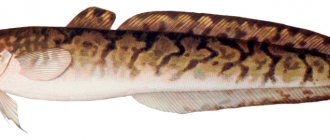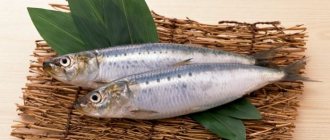Tunas are one of the most amazing game fish. Their mining history goes back more than five thousand years, with cave paintings of them found in caves in Sicily and on Greek and Celtic coins. These fish even have their own holiday - World Tuna Day, celebrated annually on May 2. We have prepared for you a series of three fascinating articles, from which you will learn:
- Why do tuna deserve such attention?
- Where and how are they caught and prepared?
- What price did the record-breaking specimens go under the hammer for?
- How some manufacturers deceive their customers on canned tuna
Let's start with a closer acquaintance. Go!
All tuna belong to the mackerel and include dozens (!) of species belonging to 5 genera. Imagine all your close and distant relatives: sisters, great-nephews, cousins, uncles and aunts, great-aunts, etc. - you can list them ad infinitum, like all the numerous types of tuna
Imagine all your close and distant relatives: sisters, great-nephews, cousins, uncles and aunts, great-aunts, etc. - you can list them ad infinitum, like all the numerous types of tuna
Let us highlight only the most significant commercial species:
- Skipjack (share of total tuna catch 58%)
- Yellowfin tuna (27%)
- Big Eyes (8%)
- Longfin (6%)
- Other species: the share of catch does not exceed 1%
Tuna have a wide variety of sizes: the smallest representatives barely reach 50 cm, and the largest are almost 5 m in length. The weight varies from 1.5 kg. up to 700 kg. Tunas live in the waters of the Pacific, Atlantic and Indian oceans, and the leading countries for their industrial catch are Japan, China, Spain, Indonesia and Taiwan.
Many species of tuna are on the verge of extinction , which is why the catch is often strictly limited, and various international commissions regulate the fishery.
Skipjack tuna
He is also Aku, Bonito or common skipjack.
Compared to other representatives of tuna, skipjack is a fairly inexpensive fish, which largely explains its popularity on the market. It is found in all oceans except the Arctic Ocean, and is considered the most common species.
On average, its length is about 50cm, and its weight varies from 3 to 5kg. It is precisely because of its small size that this species is the only one that can be found on the shelves in its entirety. Although some representatives can reach a length of over one meter and a weight of about 30 kg.
Yellowfin tuna
It is also called Yellowfin or Yellowtail Tuna.
The length of this giant is about two meters, and the average weight is approximately 175 kg, which allows it to be sold in its entirety only at auctions. It is caught in both the Indian and Atlantic oceans, but the largest share of the catch (over 60%) occurs in the Pacific Ocean. It is the Pacific yellowfin tuna that is sold in our store.
A distinctive feature of this type is the meat, dense in texture, but tender and juicy in taste. Yellowfin tuna fillets are popular all over the world and are ideal for canning.
Mackerel tuna
Another name is common frigate mackerel.
The smallest, most common and cheapest type of tuna. Its maximum length is 65cm, and its weight rarely exceeds 1.5kg. Mackerel tunas live in the waters of the Atlantic, Indian and Pacific oceans and are often caught as bycatch in the yellowfin and skipjack tuna fisheries.
This type is most often used in the production of budget canned food.
Pacific bluefin tuna
As the name suggests, this species lives in the subtropical waters of the Pacific Ocean. It is the second largest tuna, with a maximum recorded length of 3m and a weight of 450kg. Of course, not for sale entirely.
This type is considered a delicacy, and the price for 1 kg in Moscow starts from 8,000 rubles. Due to overfishing, the species has received the status of “vulnerable,” which means there is a potential risk of extinction. The dark red meat of Pacific tuna turns white after heat treatment and is considered one of the best for sushi and sashimi.
It still remains a popular trophy in individual and sport fishing. However, Greenpeace advises to refrain from catching and eating this fish, so as not to aggravate the harm caused to the ecosystem.
Origin of the species and description
Photo: Tuna
Tuna is an ancient fish from the mackerel family, genus Thunnus, which has survived to this day almost unchanged. Thunnus includes seven species; in 1999, the common and Pacific tuna were separated from them as independent subspecies.
Video: Tuna
All tunas are ray-finned fish, the most common class in the world's oceans. They received this name due to the special structure of their fins. A wide variety of ray-finned animals appeared in the process of long evolution, under the influence of adaptive radiation. The oldest discovery of fossil ray-finned fish corresponds to the end of the Silurian period - 420 million years. The remains of this predatory creature were found in Russia, Estonia, and Sweden.
Species of tuna from the genus Thunnus:
- longfin tuna;
- Australian;
- bigeye tuna;
- Atlantic;
- yellowfin and longtail.
All of them have different life expectancies, maximum size and body weight, as well as coloring characteristic of the species.
Interesting fact: Bluefin tuna is able to maintain its body temperature at 27 degrees even at a depth of more than a kilometer, where the water never warms up to even five degrees. They increase body temperature with the help of an additional countercurrent heat exchanger located between the gills and other tissues.
Weight and size
The dimensions of this mackerel-like family can be described by the following figures:
- Tuna varies in length from 0.5 m to 4.6 m - the fish can be small or very large. Fish of the genus Thunnus have the greatest body length. Representatives of the subgenus Neorthunnus are more compact. And the smallest are representatives of the tribe of the genus Thunnini.
- The weight of different types of tuna varies from 2 kg to more than 650 kg - although such fish are more likely to be trophy and are becoming increasingly rare. The distribution of weight between tuna genera will be the same as that of body length.
pixabay.com
Appearance and features
Photo: Tuna fish
All types of tuna have an elongated, spindle-shaped body that sharply tapers towards the tail. The main dorsal fin is concave and elongated, the second is sickle-shaped and thin. From it towards the tail there are up to 9 more small fins, and the tail has the shape of a crescent and it is this that makes it possible to achieve high speed in the water column, while the body of the tuna itself remains almost motionless when moving. These are incredibly powerful creatures, capable of moving at colossal speeds of up to 90 km per hour.
Tuna has a large cone-shaped head, small eyes, with the exception of one type of tuna - big-eyed. The fish's mouth is wide, always slightly open, the jaw has one row of small teeth. The scales on the front of the body and along the sides are larger and much thicker than on other parts of the body, thanks to this a kind of protective shell is formed.
The color of tuna depends on its type, but most often they all have a light belly and a dark back with a gray or blue tint. Some species have characteristic stripes on the sides, and may have different colors or lengths of fins. Some individuals are capable of gaining weight up to half a ton with a body length of 3 to 4.5 meters - these are real giants, they are also often called “the kings of all fish.” Most often, bluefin or common bluefin tunas boast these dimensions. Mackerel-shaped tuna have an average weight of no more than two kilograms and a length of up to half a meter.
Many ichthyologists agreed that these fish are almost the most perfect of all the inhabitants of the seas:
- they have an incredibly powerful tail fin;
- thanks to their wide gills, tunas are able to receive up to 50 percent of the oxygen in the water, which is a third more than other fish;
- a special system of thermoregulation, when heat is transferred primarily to the brain, muscles and abdominal region;
- high hemoglobin level and fast gas exchange rate;
- perfect system of blood vessels and heart, physiology.
Fish similar to tuna. Tuna: types, properties and cooking methods
Tuna is considered the “king of all fish” and, due to its shape and quality of meat, has gained great popularity in the human food system. Tuna fishing has been recorded since ancient times, the remains of fish skeletons are found in America, Sicily, and on the Bosphorus more than 30 words were dedicated to tuna to denote it.
Let's take a closer look at what exceptional features tuna have, their history, what they look like, as well as a description of recipes that are good for health.
General characteristics and appearance
The name “tuna” is derived from the ancient Greek word thyno, which means “to throw.”
The fish belongs to the mackerel family, the size of sea inhabitants varies from 50 cm to 4.5 m. The largest individuals are common tuna, the maximum weight of the fish reaches 685 kg. The weight of mackerel tuna reaches 2-15 kg.
Tunas are predatory fish, thanks to endothermy they are able to maintain their body temperature above the environment. Distinctive features of the appearance of these fish are the shape of their body, as well as the structure of the caudal and dorsal fin. The body of the tuna is long, resembles a spindle, the caudal fin has a leathery keel on both sides of it, and the sickle-shaped dorsal fin is designed for prolonged high-speed swimming. The maximum speed that the fish can reach is 75 km/h. The fish feed mainly on small sardines, various mollusks and crustaceans.
During spawning in warm waters, females are able to spawn up to tens of millions of eggs no larger than a millimeter at a time. The male fertilizes the eggs with seminal fluid. After a few days, they hatch into fry, which are immediately ready for independent life. Young fish stay in surface layers rich in zooplankton. Sexual maturity occurs at 2-3 years. On average, tuna lives about 35 years, but individuals have been recorded living up to 50 years.
Tuna meat is valued for its rich protein content and lack of carbohydrates. The fillet is colored from soft pink to dark red and has a pleasant smell. The fillet plates are large and easily separated. You can eat meat raw, smoked, canned, or fried. Since tuna is considered a commercial fish, some species have been nearly wiped out due to overfishing.
In amateur fishing, many competitions are held to catch the largest specimens; live caught fish, after recording the catch, are immediately released back into the sea. Such measures were taken to preserve the species population.
The common tuna is now considered an endangered species, and Australian tuna has also approached this category. Of the eight commercial tuna species, only three species are more or less safe.
Where does tuna live?
Photo: Tuna in water
Tuna has spread throughout almost the entire World Ocean, with the only exception being polar waters. Bluefin or common tuna were previously found in the Atlantic Ocean from the Canary Islands to the North Sea, sometimes it swam to Norway, the Black Sea, the waters of Australia, Africa, and felt like a master in the Mediterranean Sea. Today, its habitat has narrowed significantly. Its relatives choose tropical and subtropical waters of the Atlantic, Pacific and Indian Oceans. Tuna is able to live in cold waters, but only comes there occasionally, preferring warm ones.
All types of tuna, except Australian, very rarely come close to the coast and only during seasonal migration; more often they stay at a considerable distance from the coast. The Australian, on the contrary, is always in close proximity to land and never goes into open waters.
Tuna constantly migrate after the schools of fish on which they feed. In the spring they approach the shores of the Caucasus and Crimea, enter the Sea of Japan, where they remain until October, and then return to the Mediterranean or Marmara. In winter, tuna stays mainly at depth and rises again with the arrival of spring. During feeding migrations, it can approach very close to the shores following schools of fish that make up their diet.
Tuna fishing in Russia
Almost all tuna presented on the Russian market is imported . This factor makes tuna an even more expensive product. Most often it is purchased from China (and no, this is not a bad thing at all!), the reason is the lack of a specialized tuna fishing fleet .
To catch tuna, special large-capacity tuna seiners and longline vessels are required, fishing at depths of up to 200 m. Back in the early nineties, all large-capacity tuna fishing vessels in Russia were sold to foreign companies. By the mid-nineties, the number of average Russian tuna fishing vessels decreased from 30 to 7. This number of vessels remains relevant today.
Domestic tuna is caught in the Far East: in the seas washing the Southern Kuril Islands and the Japanese Islands.
What does tuna eat?
Photo: Tuna in the sea
All tuna are predators; they feed on almost everything that they find in the waters of the ocean or on its bottom, especially large species. Tuna always hunts in a group and is able to follow a school of fish for a long time, covering vast distances, sometimes even going into cold waters. Bluefin tuna prefer to feed at medium depths on larger prey, which may even include small sharks, while small species remain close to the surface, content with everything that comes their way.
The main diet of this predator:
- many types of schooling fish, including herring, hake, pollock;
- squid;
- octopuses;
- flounder;
- shellfish;
- various sponges and crustaceans.
Tuna accumulates mercury in its meat more intensively than all other marine inhabitants, but the main reason for this phenomenon is not its diet, but human activity, as a result of which this dangerous element gets into the water. Some mercury ends up in the ocean during volcanic eruptions, during the weathering of rocks.
Interesting fact: One of the sea travelers captured the moment when a particularly large individual of tuna grabbed a sea gull from the surface of the water and swallowed it, but after a while it spat it out, realizing its mistake.
Yellowfin tuna. Fish day. Tuna or "tuna"? Lakedra or yellowtail? Who is who?
Our traders are sinning by calling fish by unknown names. The same fish is sold under three names: tuna, lakedra, yellowtail. And what’s surprising is that everything is almost true. Let's see if it's tuna.
But it's not tuna. Google can help us - the fish from our market have nothing to do with tuna. If there is a yellow stripe along the body and a yellowish tail, then it is Japanese lakedra, also known as yellow-tailed lakedra, also known as Japanese yellowtail, and a dozen other Japanese names.
Why the horse mackerel family was called tuna is not entirely clear. But to justify this commercial deception, let’s prepare canned “tuna” and compare it with store-bought tuna from a jar. First, cut the fish into fillets without skin, without ribs.
We salt each piece, as for frying, and place it in a glass jar. From one lakedra (about 1 kg) I got two half-liter jars. Add water so that the fish is covered, but not above the shoulders. A few black peppercorns, a bay leaf and 1 tbsp. spoon of vegetable oil. Cover with foil and place in a cold oven. Turn it on 180 degrees. Heat until the first bubbles appear, switch to 130 degrees and simmer for 2 hours.
For the purity of the experiment, I bought a can of Tuna. Every possible can option in the store said “Vietnamese tuna.” Our lakedra is most likely Korean. Neighbours. The finished canned food looks like this:
Honestly speaking, I was sure that the real tuna was a giant, and the jar must contain pieces of fillet from a huge carcass. And these two roundels are even smaller than my lakedra. Or maybe fish canneries also buy the same fake tuna? About taste. Very similar, but ours is better. For the purity of the experiment, I made pasta with tuna: onions, tomatoes, some herbs, fish broth from a jar. I added my lakedra to half, and tuna from a can to the other half. I put it in half on the plates. The taste is absolutely the same. If I hadn’t tried to tell everyone the difference, no one would have noticed.
Conclusion. Even though it is not real tuna, but yellowtail, it can be used in dishes with canned “tuna”. Moreover, this fish is considered a delicacy, very valuable, nutritious and noble in Japan and Korea. In Japan it has many different names depending on weight, age, and habitat. Since the maritime Japanese value it so much, then we will accept it into subsistence farming. Of course, you should try frying the lakedra. Let's pretend it's a tuna steak. Brush the fillet with oil. Salt, pepper, sprinkle with rosemary, let stand for 30 minutes. I fried it on a grill pan without breading, just patted it with a paper napkin..
The aroma is like in a fish restaurant by the sea. The meat is snow-white, dense, almost boneless, and quite juicy.
And even though it’s not tuna at all, but Japanese yellowtail. The main thing is that we prepared healthy sea fish. And our pasta does not contain a question mark from a tin, but freshly prepared lakedra. Lakedra on the market costs 150 rubles/kg. One fish yielded two half-liter jars. Net weight (fish with broth) of each is 400 g. Canned tuna, produced by our various factories from Kaliningrad to Vladivostok, cans of 200-300 g cost from 60 to 120 rubles. My purchase for 90 rubles flavored pasta for two people. Two incomprehensible micropieces and the broth were given to the dog. In principle, I don’t buy canned fish, and now canned “tuna” has been mastered and is included in the list of small achievements of subsistence farming.
Features of character and lifestyle
Photo: Tuna fish
Tuna is a schooling fish that requires constant movement, because it is during movement that it receives a powerful influx of oxygen through its gills. These are very dexterous and fast swimmers, they are capable of developing enormous speeds under water, maneuvering, and moving over enormous distances. Despite constant migrations, tuna always return to the same waters again and again.
Tunas rarely take food from the bottom or surface of the water, preferring to look for prey in its thickness. During the daytime they hunt in the depths, and with the onset of night they rise. These fish are able to move not only horizontally, but also vertically. The temperature of the water determines the nature of the movement. Tuna always strives for layers of water heated to 20-25 degrees - this is the most comfortable indicator for it.
During a school hunt, tuna walks around a school of fish in a semicircle and then quickly attacks. In a short period of time, a large school of fish is destroyed, and it is for this reason that in the last century fishermen considered tuna their competitor and deliberately destroyed it so as not to be left completely without a catch.
Interesting fact: Until the mid-20th century, meat was more often used as a raw material for the production of animal feed.
Tuna recipes. Tuna dishes
You will find tuna dishes in cuisines all over the world. Tuna is eaten raw, fried, canned. The largest volumes of this fish are consumed by residents of Japan.
Tuna is rich in protein and contains many healthy omega fats and micronutrients. Tuna meat is usually sold cut and cut into steaks in vacuum packaging. There are tricks to cooking fried tuna dishes. It is very important not to overcook the fish, otherwise the steaks will turn out dry and tasteless. The inside of the tuna steaks should remain slightly pink. Canned tuna in its own juice is quite cheap and can be found in any store. It makes excellent salads quickly and easily.
Social structure and reproduction
Photo: Tuna underwater
Tuna reach sexual maturity only at three years of age, but go to spawn no earlier than 10-12 years, in warm waters a little earlier. Their life expectancy is on average 35 years, and can reach half a century. For spawning, the fish migrates to the warm waters of the Gulf of Mexico and the Mediterranean Sea, while each zone has its own spawning period, when the water temperature reaches 23-27 degrees.
All tuna are fertile - at one time, the female produces up to 10 million eggs about 1 millimeter in size, and all of them are immediately fertilized by the male. Within a few days, fry emerge from them and gather in huge quantities at the surface of the water. Some of them will be eaten by small fish, and the rest will quickly increase in size, feeding on plankton and small crustaceans. Young animals switch to a normal diet as they grow, gradually joining adults during their school hunting.
Tuna is always in a school of its relatives; single individuals are rare, unless it is a scout in search of suitable prey. All members of the pack are equal, there is no hierarchy here, but there is always contact between them, their actions during a joint hunt are clear and coordinated.
Tuna red fish. Botanical description
The largest tuna caught off the coast of New Zealand in 2012 weighed 335 kg. This is a large commercial fish that rarely harbors parasites. Thanks to this, a large number of exquisite raw delicacies are prepared from its meat. The life of a tuna is not possible without constant movement. Massive lateral muscles, a fusiform body narrowed to the end, a sickle-shaped dorsal fin, and a leathery keel on the caudal peduncle ensure fast and long swimming of the individual in the Azov, Japanese, Black, Barents Seas and the Pacific, Atlantic, and Indian Oceans. The fish stay in large schools.
Tuna are excellent swimmers, reaching speeds of up to 77 km/h in pursuit of food. The main food is crustaceans, mollusks and small fish (herring, mackerel, sardine).
Tuna meat is colored red due to the presence of the iron-containing protein myoglobin, produced during “high-speed” movement in the muscles. The ability to lay eggs occurs in females at the age of three. Spawning occurs in June-July in the warm waters of the subtropics. The fish is extremely prolific and can lay 10 million eggs per year.
Subspecies
Regular (red) tuna
Habitat: equatorial waters of the Atlantic and northeastern Indian Oceans, Caribbean and Mediterranean Seas, Gulf of Mexico. Red tuna is rarely found in the Barents Sea and off the coast of Greenland. The largest representative of this species reached 4.58 m in length and weighed 684 kg.
Atlantic (black) tuna
Distinctive features of the species are its compact size and yellowish sides. The length of adult specimens, as a rule, does not exceed 1 m, and the weight is 20 kg. Atlantic tuna has the shortest lifespan, which does not exceed 6 years. This species is distributed only in the warm seas of the western Atlantic (from Cape Cod to the coast of Brazil).
Bluefin tuna
It is the largest species. Its thick body has the shape of a circle in cross section. The maximum weight reaches 690 kg, and the length is 4.6 m. The large scales resemble a shell along the lateral line. Bluefin tuna is of the greatest commercial importance. The habitat is very wide and stretches from polar to tropical ocean waters.
Yellowfin (yellowtail) tuna
A distinctive feature is the bright yellow color of the rear fins. An adult representative of the species has 20 vertical stripes on its silvery abdomen, reaches 2.4 m in length and gains weight up to 200 kg. Habitat: tropical and temperate latitudes, except the Mediterranean Sea.
White (albacore) tuna
It is famous for its fatty meat, which is considered the most valuable among the mackerel representatives. Lives in tropical, temperate latitudes of the ocean. This is a small fish, weighing about 20 kg.
Interestingly, tuna ranks second in popularity among seafood, giving way to shrimp. The largest consumer of red fish meat is Japan. Every year, residents of the Land of the Rising Sun consume more than 43 thousand tons of tuna. In France, the taste of fish is equated to steamed veal.
It is believed that tuna meat is absolutely safe to eat even raw, since it is not infected with parasites.
Natural enemies of tuna
Photo: Tuna
Tuna has few natural enemies due to its incredible agility and ability to quickly accelerate to enormous speeds. There have been cases of attacks by some species of large sharks and swordfish, as a result of which the tuna died, but this more often occurs with small subspecies.
The main damage to the population is caused by humans, since tuna is a commercial fish, the bright red meat of which is highly valued due to its high protein and iron content, excellent taste, and resistance to infection by parasites. Since the eighties of the 20th century, the fishing fleet has been completely re-equipped, and the industrial catch of this fish has reached incredible proportions.
Interesting fact: Tuna meat is especially valued by the Japanese; price records are regularly set at Japanese food auctions - the cost of one kilogram of fresh tuna can reach $1,000.
The attitude towards tuna as a commercial fish has changed dramatically. If for several thousand years this powerful fish was held in high esteem by fishermen, its image was even embossed on Greek and Celtic coins, then in the 20th century tuna meat was no longer valued - it began to be caught for sporting interest to obtain a spectacular trophy, and was used as a raw material in the production of feed mixtures.
Beneficial properties of tuna meat
Omega-3 and fatty acids in the composition complement the human diet well, as do nuts and seeds.
The meat contains antioxidants and proteins, high levels of selenium, phosphorus, iron, magnesium and potassium. In terms of vitamin composition, this is the richest meat - B12, niacin, B6, riboflavin.
Calorie content of raw fillet: 91 kcal per 100 grams. As it is cooked, its calorie content increases. When fried - 195 Kcal, canned in oil - 169 Kcal, boiled - 140 Kcal, stewed in its own juice - 96 Kcal.
Population and species status
Photo: Big Tuna
Despite the almost complete absence of natural enemies and high fertility, the tuna population is steadily declining due to the enormous scale of fishing. The common or bluefin tuna has already been declared endangered. The Australian species is on the verge of extinction. Only a number of small subspecies do not cause concern among scientists and their status is stable.
Since tuna takes a long time to reach sexual maturity, there is a ban on catching young fish. If they are accidentally caught on a fishing vessel, they are not allowed to go under the knife, but are released or transported to special farms for rearing. Since the eighties of the last century, tuna began to be purposefully raised in artificial conditions using special pens. Japan has been especially successful in this. A large number of fish farms are located in Greece, Croatia, Cyprus, and Italy.
In Turkey, from mid-May to June, special vessels track schools of tuna and, surrounding them with nets, move them to a fish farm in Karaburun Bay. All activities related to catching, growing and processing of this fish are under strict state control. The condition of the tuna is monitored by divers; the fish are fattened for 1-2 years and then sent for processing or frozen for further export.
Red or not?
Many people wonder whether tuna is a red fish or not. The meat has a reddish-pink tint, which means that the fish contains hemoglobin protein, which contains a lot of iron. Many people are wondering whether tuna is a red fish or not. Our answer is red. The meat itself is exquisite and tender, rich in vitamins. When boiled, it looks like steamed veal.
In the main species, as a rule, the meat is light or dark and it is generally accepted that it is not attacked by parasites like others. Tuna has a very rich taste, great with vegetables, salads, and pasta. It is used to make delicious sauces that are served with side dishes, salads or meat.
What to serve with
The most delicious steaks can be eaten both at lunchtime and in the evening. Cooked fish should be kept covered or wrapped in foil so that the meat can rest a little and marinate in its juices. Since tuna is a versatile fish, it is recommended to serve it as a main dish, with a salad, side dish, or additional elements to pasta or other dish. Quite often, this fish is accompanied by a variety of sauces, including garlic aioli, pesto, and sauces made from fresh ingredients.
Tuna lifestyle and habitat
Tuna are schooling pelagic fish that prefer warm water with high salinity. They are excellent swimmers, swift and agile. Tuna constantly needs to be on the move, since this is the only way there is a sufficient flow of oxygen through the gills.
Tuna migrate seasonally along the coasts and travel considerable distances in search of food. Accordingly, tuna fishing occurs at a certain time when the concentration of fish in the area is maximum. Rarely a fisherman would not dream of taking a photo of tuna - a fish the size of a man.
The water areas where tuna fish live are huge. Thanks to the increased blood temperature, the fish feels comfortable both at +5° and +30°. The habitat of tuna covers the tropical, subtropical and equatorial waters of three oceans: Indian, Atlantic and Pacific. Some species prefer shallow water near the coast, others, on the contrary, prefer the simplicity of open water.











